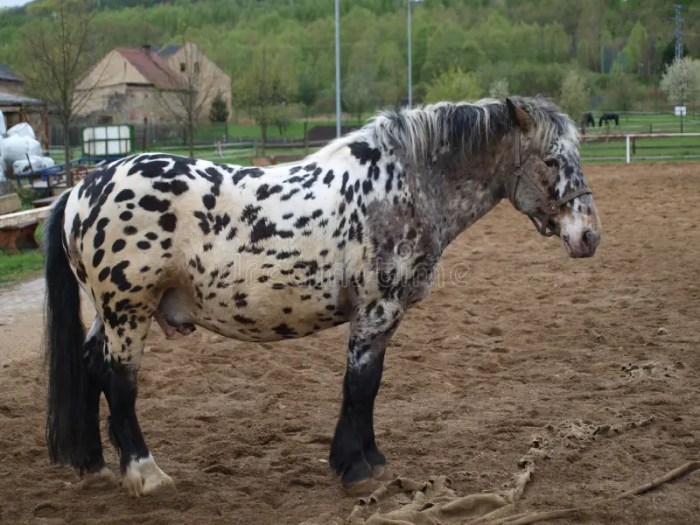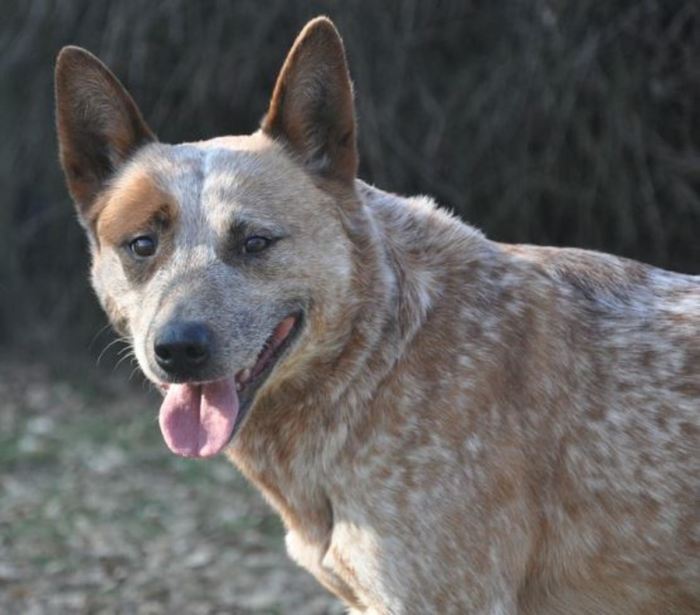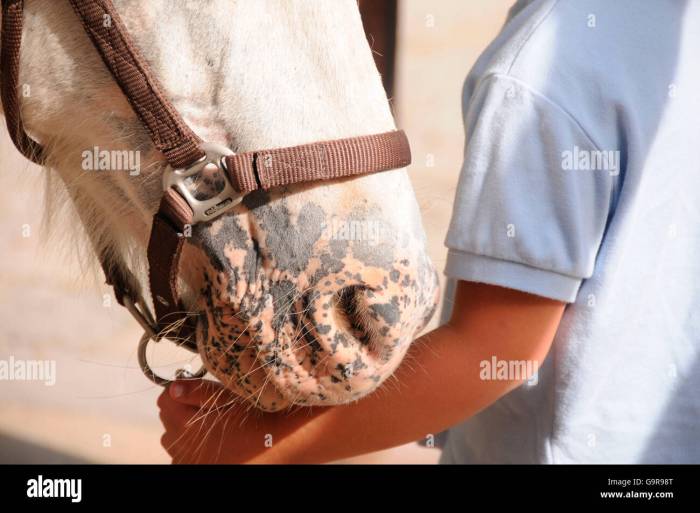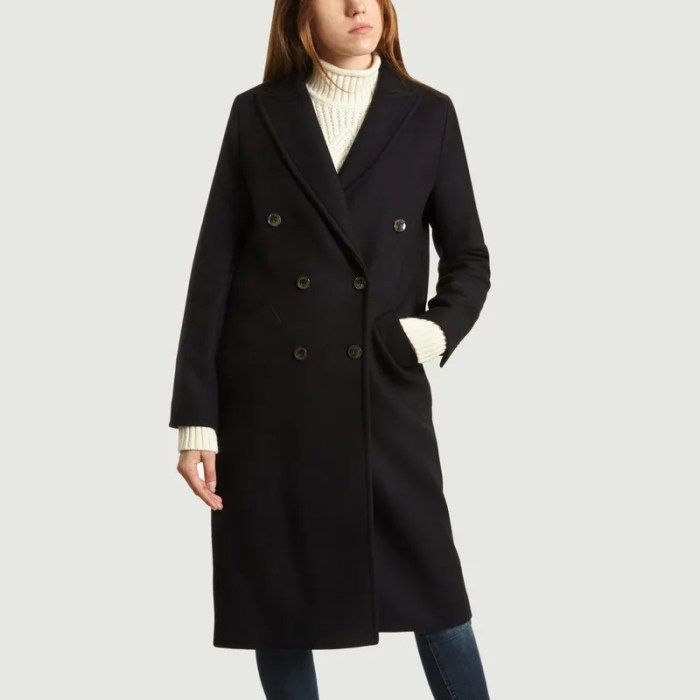Horse with a mottled coat – Horses with mottled coats, a mesmerizing spectacle of colors and patterns, have captivated the imaginations of horse enthusiasts and artists alike. Their distinctive appearance, shaped by a fascinating interplay of genetics and care, invites us to delve into a world of equine beauty and intrigue.
From the vibrant Appaloosa to the elegant Knabstrupper, mottled horses exhibit an extraordinary range of coat patterns and hues. The genetic tapestry that weaves these patterns holds secrets of inheritance and evolution, while proper grooming and care enhance their natural radiance.
As we explore the historical and cultural significance of these remarkable animals, we uncover their presence in art, literature, and mythology.
Physical Characteristics

The mottled coat of a horse is a unique and striking feature that sets it apart from other equines. This distinctive coat pattern is characterized by a mixture of different colored patches or spots that create a mottled or dappled appearance.
The size, shape, and distribution of these patches can vary greatly, resulting in a wide range of patterns.
Genetic Factors
The mottled coat pattern is primarily determined by genetic factors. The inheritance of this trait is complex and involves multiple genes that interact to produce the characteristic mottled appearance. One of the key genes involved is the KIT gene, which plays a role in the production of melanocytes, the cells responsible for producing pigment in the hair and skin.
Mutations in the KIT gene can lead to a reduction or absence of melanocytes in certain areas, resulting in the formation of white or light-colored patches.
Variations in Coat Patterns
Mottled coat patterns can vary significantly across different horse breeds. Some breeds, such as the Appaloosa and the Knabstrupper, are known for their distinctive mottled coats. In the Appaloosa, the mottled pattern is typically characterized by large, irregular patches of white or light-colored hair interspersed with darker areas.
The Knabstrupper, on the other hand, exhibits a more uniform pattern of small, round spots that cover the entire body.
Coat Care and Grooming
Mottled coats require special care to maintain their unique appearance and prevent common problems. Proper grooming techniques and products are essential for keeping these horses healthy and their coats in top condition.
A horse with a mottled coat can be quite striking, with its patches of different colors. But did you know that John Adams, the second president of the United States, was also known for his mottled coat? Okay, not literally, but his political career was marked by both good and bad deeds.
To learn more about the bad things John Adams did , check out this informative article.
Brushing and Bathing
- Regular brushing is crucial to remove dirt, debris, and loose hair. Use a soft-bristled brush or grooming mitt to avoid damaging the delicate coat.
- Bathing should be infrequent and only when necessary. Use lukewarm water and a mild shampoo designed for horses with sensitive skin.
Conditioning and Moisturizing
- Conditioning treatments can help soften and detangle the coat, making it easier to brush and reducing the risk of matting.
- Moisturizing products, such as coat oils or sprays, can help prevent dryness and keep the coat shiny and healthy.
Preventing and Treating Common Coat Problems
- Mottled coats are prone to rain rot, a bacterial infection that causes scabs and hair loss. Keep horses dry and clean to prevent this condition.
- Sunburn can also damage mottled coats. Use sunscreen or provide shade to protect the horse’s skin.
Historical and Cultural Significance
Horses with mottled coats have held significant cultural and historical importance in various societies worldwide. These distinctive markings have often been associated with specific beliefs, traditions, and even supernatural powers.
Role in Art and Literature, Horse with a mottled coat
Mottled horses have frequently appeared in art and literature, capturing the imagination of artists and writers alike. In ancient Greek mythology, the mottled coat of the winged horse Pegasus symbolized speed and inspiration. In medieval tapestries and paintings, horses with mottled coats represented nobility and prestige.
Cultural Beliefs and Traditions
In some cultures, horses with mottled coats were believed to possess special abilities or connections to the supernatural. In Celtic tradition, for example, mottled horses were associated with fairies and other mythical beings. In some African cultures, they were considered to bring good luck and protection.
Health Considerations

Horses with mottled coats may be prone to certain health issues due to their unique genetic makeup. Regular veterinary checkups are crucial for early detection and treatment of any potential health concerns.
Specific Diseases and Conditions
- Mottled Skin Disease:A rare genetic disorder that causes abnormal skin pigmentation and lesions.
- Sebaceous Adenitis:A skin condition characterized by inflammation of the sebaceous glands, leading to hair loss and skin infections.
- Immune System Disorders:Mottled coats have been associated with an increased risk of certain immune system disorders, such as autoimmune diseases.
Breeding and Genetics: Horse With A Mottled Coat

The inheritance of mottled coats in horses is a complex trait that involves multiple genes. The expression of the mottled pattern can vary greatly, from subtle flecks to bold, well-defined spots. Understanding the genetic basis of mottled coats can help breeders produce horses with desired coat patterns.
Genetic Inheritance
The mottled coat pattern is primarily determined by a single gene known as the “leopard complex” (Lp). This gene has several alleles, each of which produces a different degree of spotting. The Lp allele is dominant over the non-mottled allele (lp).
Horses with two copies of the Lp allele (LpLp) have a solid coat, while horses with one copy of the Lp allele and one copy of the lp allele (Lplp) have a mottled coat. Horses with two copies of the lp allele (lplp) have a non-mottled coat.
Breeding Strategies
To produce horses with mottled coats, breeders can select for horses with the Lplp genotype. However, it is important to note that the expression of the mottled pattern can vary greatly, even among horses with the same genotype. Other factors, such as the presence of other spotting genes and environmental factors, can also influence the appearance of the mottled coat.
Ethical Considerations
Breeding for specific coat colors or patterns raises ethical considerations. Some argue that breeding solely for aesthetic purposes can compromise the health and welfare of the horses. It is important for breeders to prioritize the overall health and temperament of the horses they produce, rather than focusing solely on coat patterns.
Examples and Illustrations

The mottled coat pattern is found in various horse breeds, each exhibiting unique characteristics. The following table showcases a few examples:
| Breed | Image | Description |
|---|---|---|
| Appaloosa | [Image of Appaloosa horse with mottled coat] | Known for its spotted or mottled coat, often with a white or light-colored blanket over the hips. |
| Knabstrupper | [Image of Knabstrupper horse with mottled coat] | Features a distinctive leopard-like spotted or mottled coat pattern, often with a dark base color and white or light-colored spots. |
| American Paint Horse | [Image of American Paint Horse with mottled coat] | Displays a combination of white or light-colored patches with solid-colored areas, creating a mottled or spotted effect. |
The range of mottled coat patterns in horses is vast. Some horses exhibit a subtle mottling, while others have more pronounced and striking patterns. Here’s a series of illustrations showcasing the diversity:
- Leopard Spotting:Large, distinct spots covering the entire body.
- Snowflake Spotting:Small, round spots resembling snowflakes.
- Marble Spotting:Irregular, swirled patterns resembling marble.
- Roan:A mixture of white and colored hairs evenly distributed, creating a mottled appearance.
A gallery of high-quality photographs featuring horses with mottled coats is available for your viewing pleasure, showcasing the beauty and diversity of this unique trait.
Query Resolution
What causes the mottled coat pattern in horses?
The mottled coat pattern is a result of a genetic mutation that affects the distribution of pigment cells in the horse’s skin.
Are mottled coats common in all horse breeds?
No, mottled coats are more common in certain breeds, such as the Appaloosa, Knabstrupper, and Noriker.
Do mottled coats require special care?
Mottled coats do not require special care beyond regular grooming and maintenance.